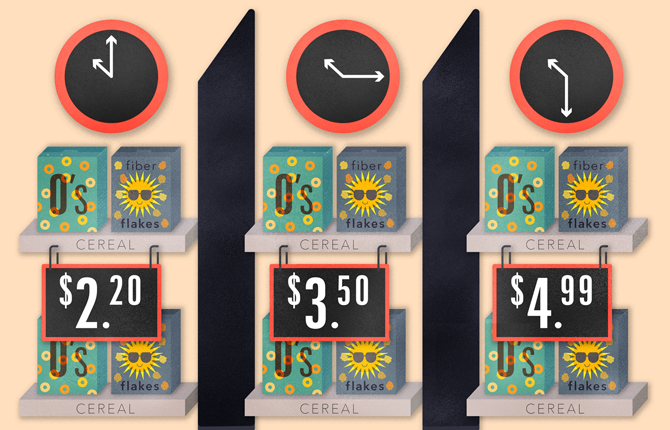
Over the past few weeks, we’ve been writing and recording analyst roundtables about a potential new area of local media and advertising: Variable product pricing.
Like airline pricing, but on steroids, the idea is that the age of big data and mobile signals will better reveal consumer demand and probability to transact (think: proximity, past behavior, etc.).
From there, the next step is to work towards more economically attractive yield management and revenue optimization for local businesses. It could really unlock value in high value verticals like autos.
The topic is further explored in my monthly Street Fight column. Check out the excerpt below and the rest is here. We’ll also tackle this at our Leading in Local conference, just two weeks away.
(email me at mbolandATbiakelsey.com if you want a discount code to register)
A few weeks ago while between meetings at AdTech NY, I stepped into a session just in time for Retailigence CEO Jeremy Geiger to trigger an a-ha moment about local product pricing. Then the next day at Qualcomm’s LTE Direct Summit, it surfaced again.
The idea stems from the shifting attitude in local to use proximity-based data beyond just ad targeting, toward better ad creative. This takes in variables like weather, time of day, and product availability. What’s nearby, on the shelf, right now? And what does it cost?
Retailigence has done this for years with an API for app developers and ad networks to bake in SKU-level product data. But developing more recently is combining this with increasingly robust mobile signals and sometimes obscure data that capture situational relevance.
Geiger provided the example of measuring something as esoteric as the airborne pollen count. In concert with inventory data of nearby pharmacies, you can imagine how ads can be targeted and crafted in ways to reach allergy sufferers in time-sensitive ways.
This isn’t totally new, but it gets interesting when the data are used to not only to create relevant ads, but also better yield management. In other words, variable pricing to generate or capture demand in more economically strategic ways. Think airfare pricing.
It boils down to segmenting consumers by willingness to pay for something — a function of location-oriented factors. It’s a jacked up version of the airline model in that it that maximizes revenue with demand-driven pricing. But is there a local commerce version?
We’re getting closer: all these proximity-related factors enable predictive modeling around transaction probability. That can then be plugged into an equation to determine price sensitivity or elasticity on an individual level. What discount will get your attention?

This Post Has 0 Comments